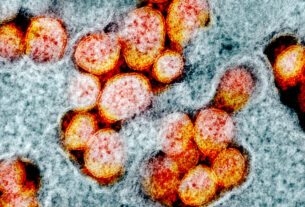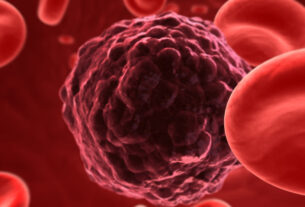Contrary to previous theories among scientists and doctors that heart patients are at increased risk of cancer just because of obesity, smoking, and complications of type-2 diabetes, a new Israeli study reveals that following a myocardial infarction, extracellular bubbles are secreted from the heart that increases the risk of malignant tumors.
Researchers at Tel Aviv University (TAU) and at Sheba Medical Center at Tel Hashomer have found a mechanism that is responsible for the increased risk of getting cancer among heart disease patients. They are small, extracellular vesicles (sEVs) that are secreted from the sick heart to heal it and released into the bloodstream. They encourage the growth of cancer cells throughout the body.
The researchers believe that the important discovery may in the future improve the protocols for the treatment of heart diseases so that they also take into account the increased risk of cancer.
The study was led by Prof. Jonathan Lior from TAU’s Neufeld Heart Research Institute and Medical School and Sheba’s Tamman Cardiovascular Research Institute and his research student Tal Coller at TAU. Just published in the scientific journal Circulation under the title “Small extracellular vesicles from infarcted and failing heart accelerate tumor growth,” it was funded with the assistance of the ICA and the Israel Science Foundation.
Coller explained: “In 2013, Israeli cardiologist Tal Hasin showed for the first time that there is a connection between heart failure and cancer. Heart patients are at a higher risk of getting cancer, and since heart disease is a leading cause of death (first place in the US and second, after cancer, in Israel), there are many people who are at risk. We checked what the diseased heart secretes that may be a cancer-promoting factor, and we found that the culprit is small extracellular bubbles. These are tiny particles wrapped in a membrane, which all cells secrete, but as a result of heart damage, the bubbles are released in greater quantity and contain factors related to growth, the creation of blood vessels and changes in the immune system, moving in the blood circulation and eventually reaching the malignant tumor or the pre-cancerous tissue.”
Coller added “following an infarction in the heart muscle and deterioration to heart failure, small extracellular bubbles containing growth factors and small nucleic acid molecules that encourage cell division are released. This mechanism is actually intended to heal the injured cardiac tissue, but the bubbles are released from the heart, moving in the blood circulation in the body and eventually reaching the cancerous growth as well.”
“Many theories have been proposed for the increased risk that heart patients are at for cancer. Starting with common risk factors such as smoking, diabetes and obesity, and ending with a specific protein or molecule,” said Lior. “We showed for the first time that the diseased heart secretes bubbles that contain thousands of different growth factors; they don’t encourage the growth of any tumor, but they certainly affect the immune system and may cause any tumor in the body to benefit from them.”
Researchers test their hypothesis
To test their hypothesis, the TAU researchers inhibited the formation of bubbles in model animals with heart disease and found that indeed, the risk of cancer decreases along with the inhibition of bubble production. But this cannot be a solution, since inhibiting the production of the bubbles causes severe side effects that are not desired. “When you inhibit the formation of bubbles, you do get less cancer – but you cause a lot of damage along the way,” Lior said. “That’s why we tried a different strategy – to treat the patient’s heart to reduce the damage to the cardiac tissue so it secretes fewer bubbles. We used spironolactone, which is a well-known, old, and good drug for the treatment of heart failure, but we were given the model animals at a very early stage of the disease, and we saw that the heart secreted 30% fewer bubbles. As a result, the malignant tumors grew more slowly. Our experiment shows that it is possible to intervene in heart disease in a way that reduces the risk of cancer among heart patients.”
As for the clinical implications of the study, Coller is careful in his words: “It may be necessary to adjust existing treatments for heart disease to take into account the risk of cancer. In addition, it is possible to find biomarkers among heart patients that will indicate an increased risk of cancer since not all patients are at higher risk. This is preliminary and basic research, and a lot of work is still required to unravel the connection between the two.”
ICA director-general Moshe Bar Haim said, “Thanks to public donations and designated funds, our research committee examines and selects dozens of studies every year and provides funding to researchers and doctors from the research and treatment centers in Israel. From these studies, new methods were developed for the diagnosis, treatment, and rehabilitation of cancer patients. Research has no territorial boundaries, so every achievement in research here in Israel is an achievement for the entire world. We hope that this new research can be applied in Israel and abroad to promote accurate treatment for patients.”




